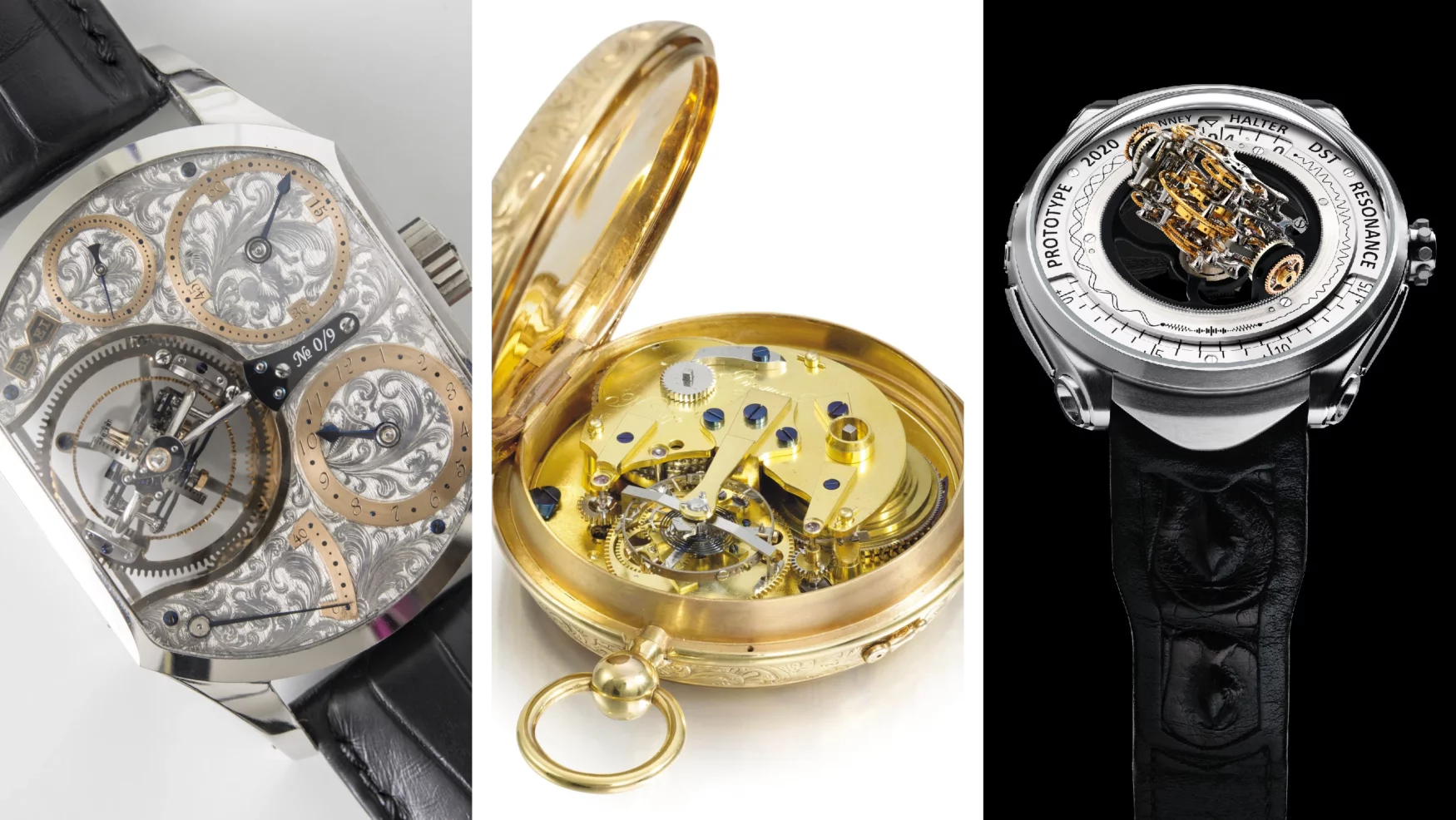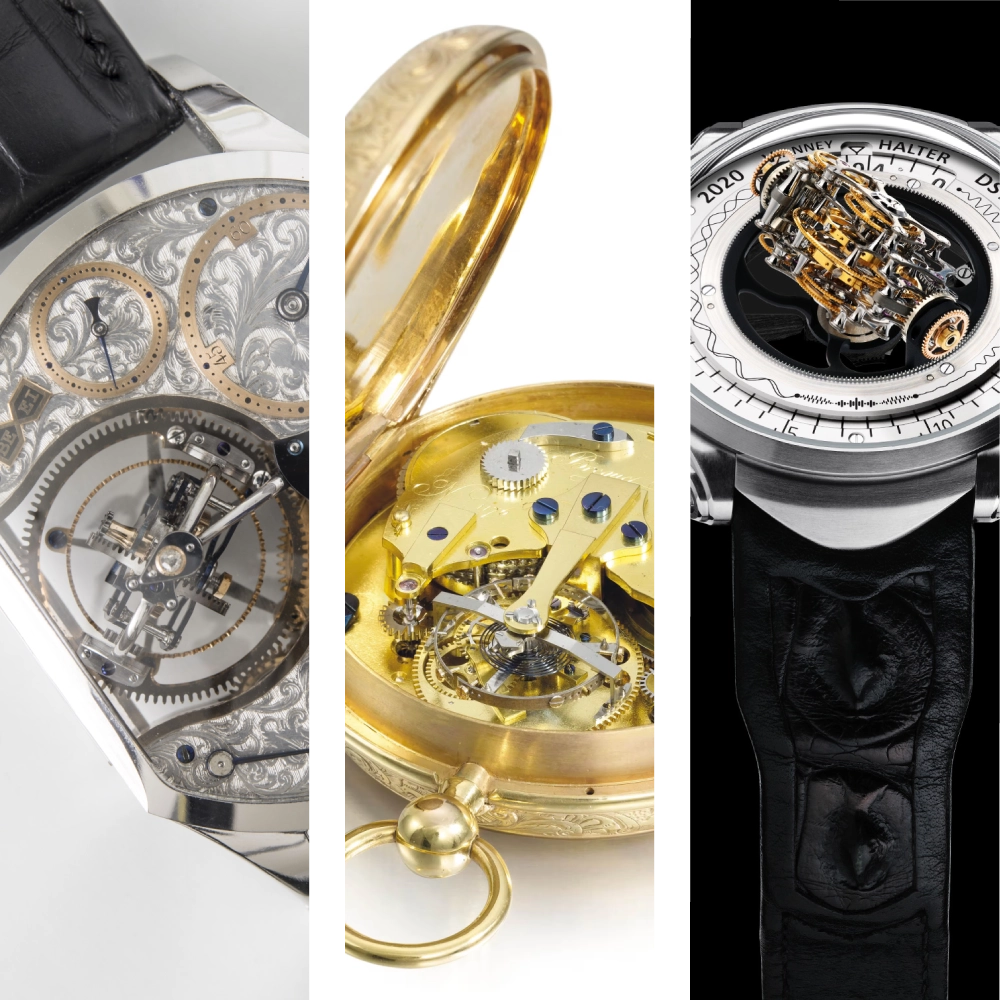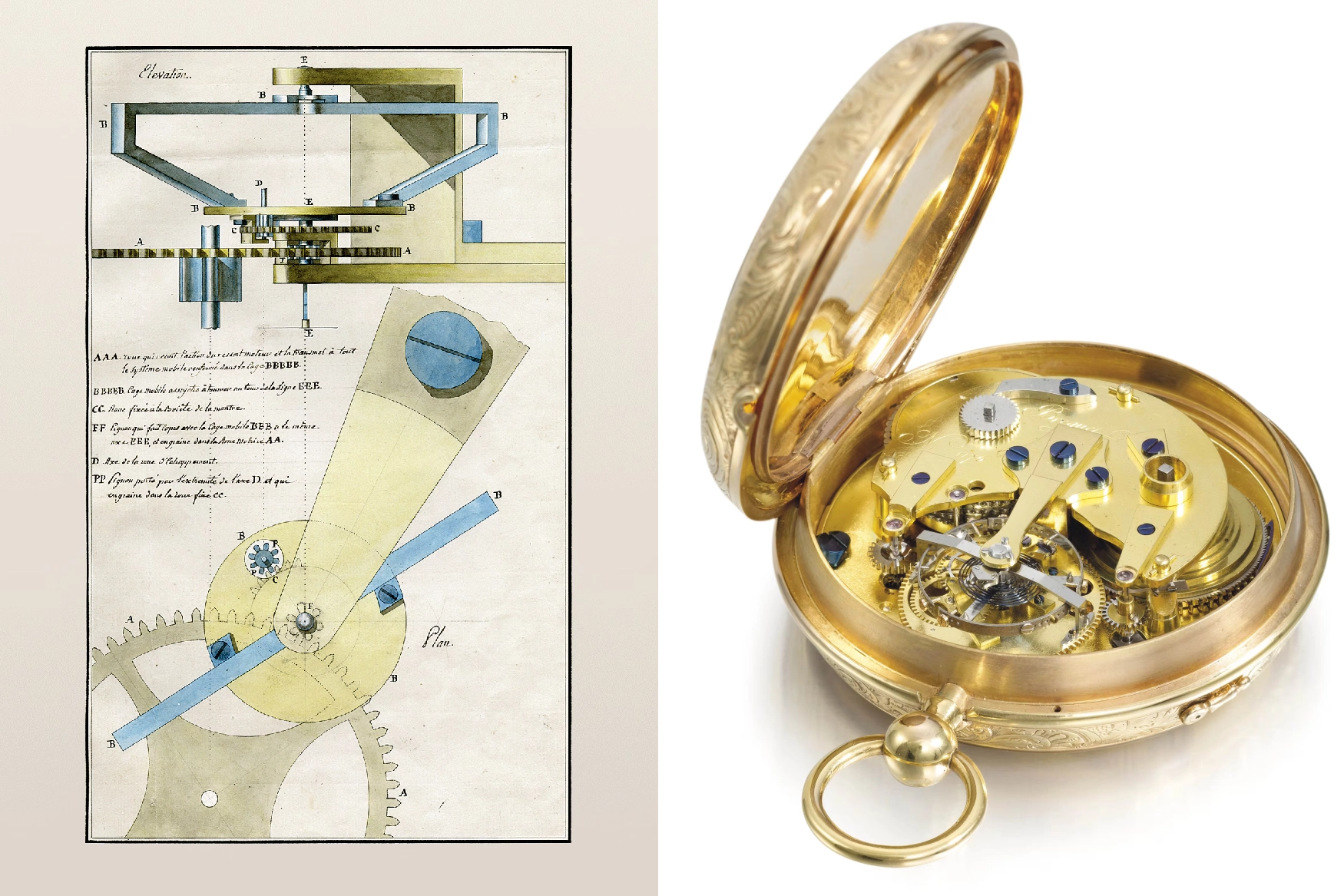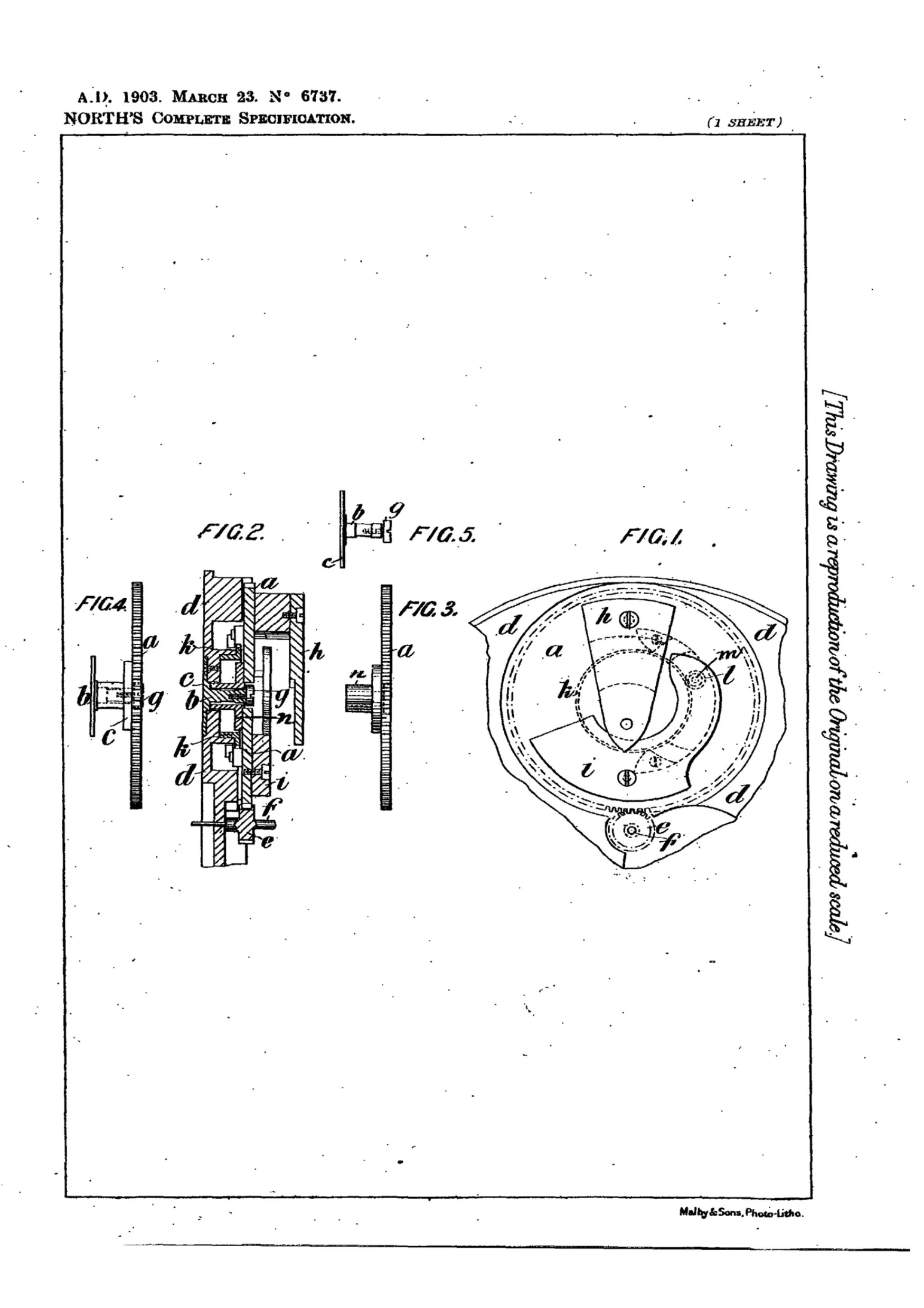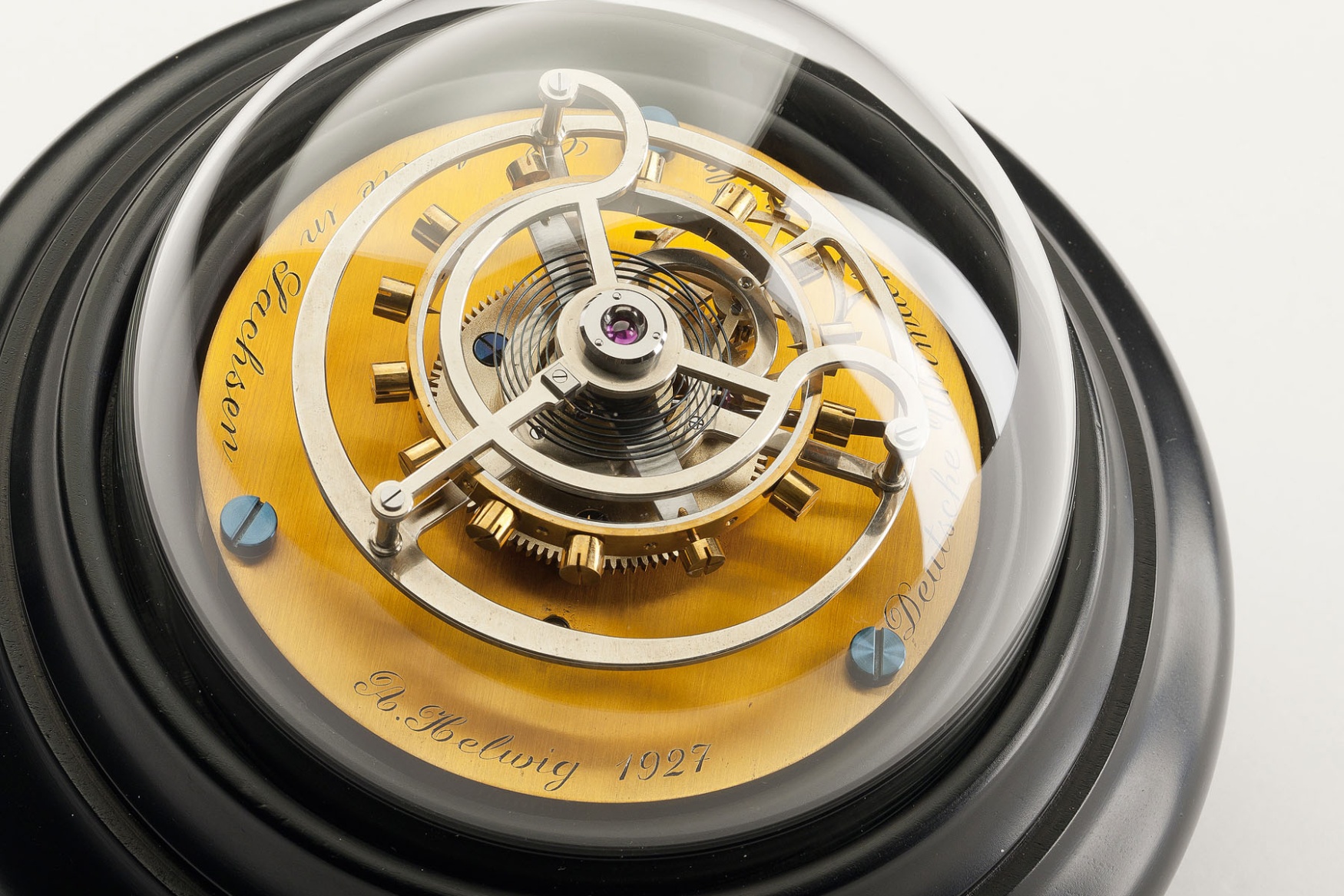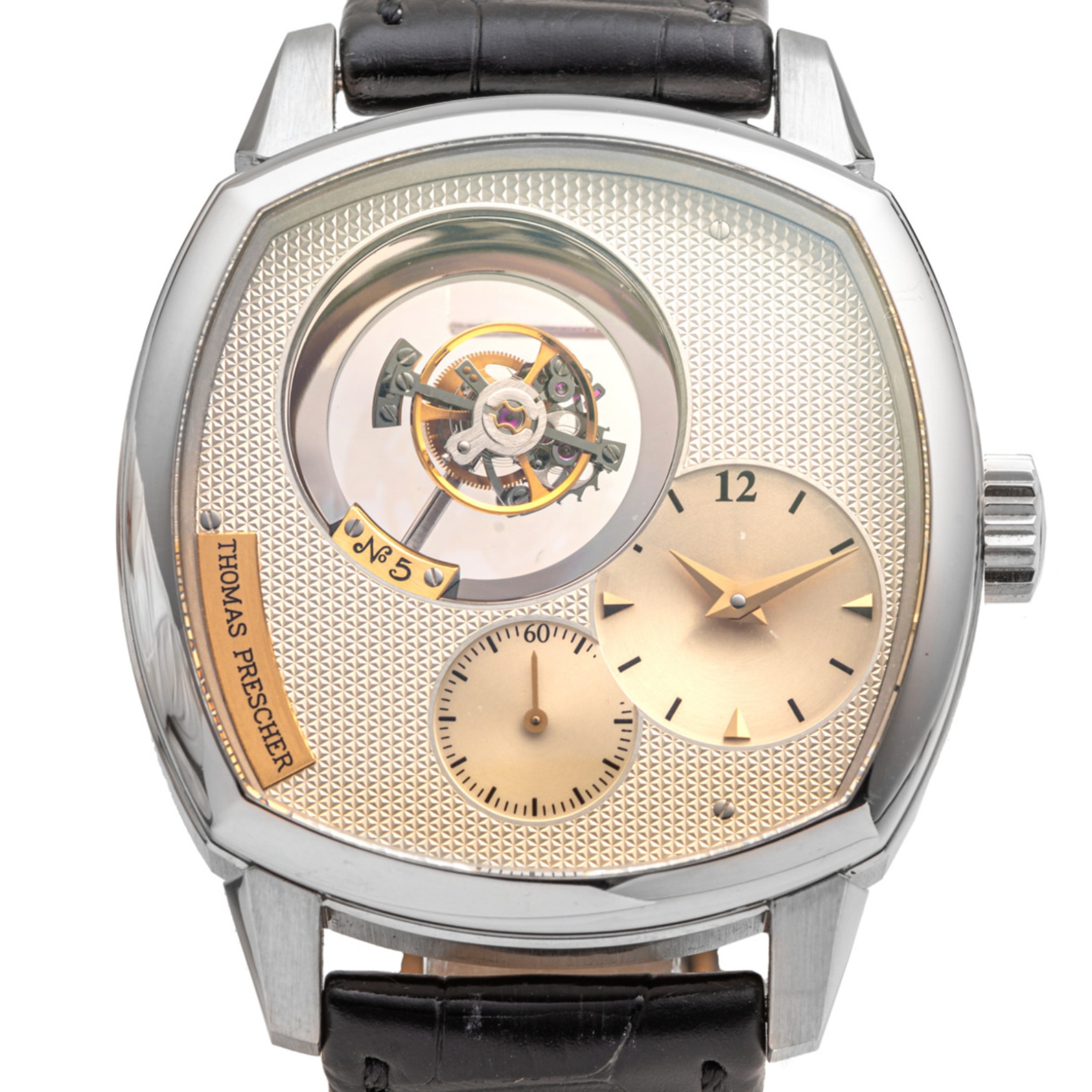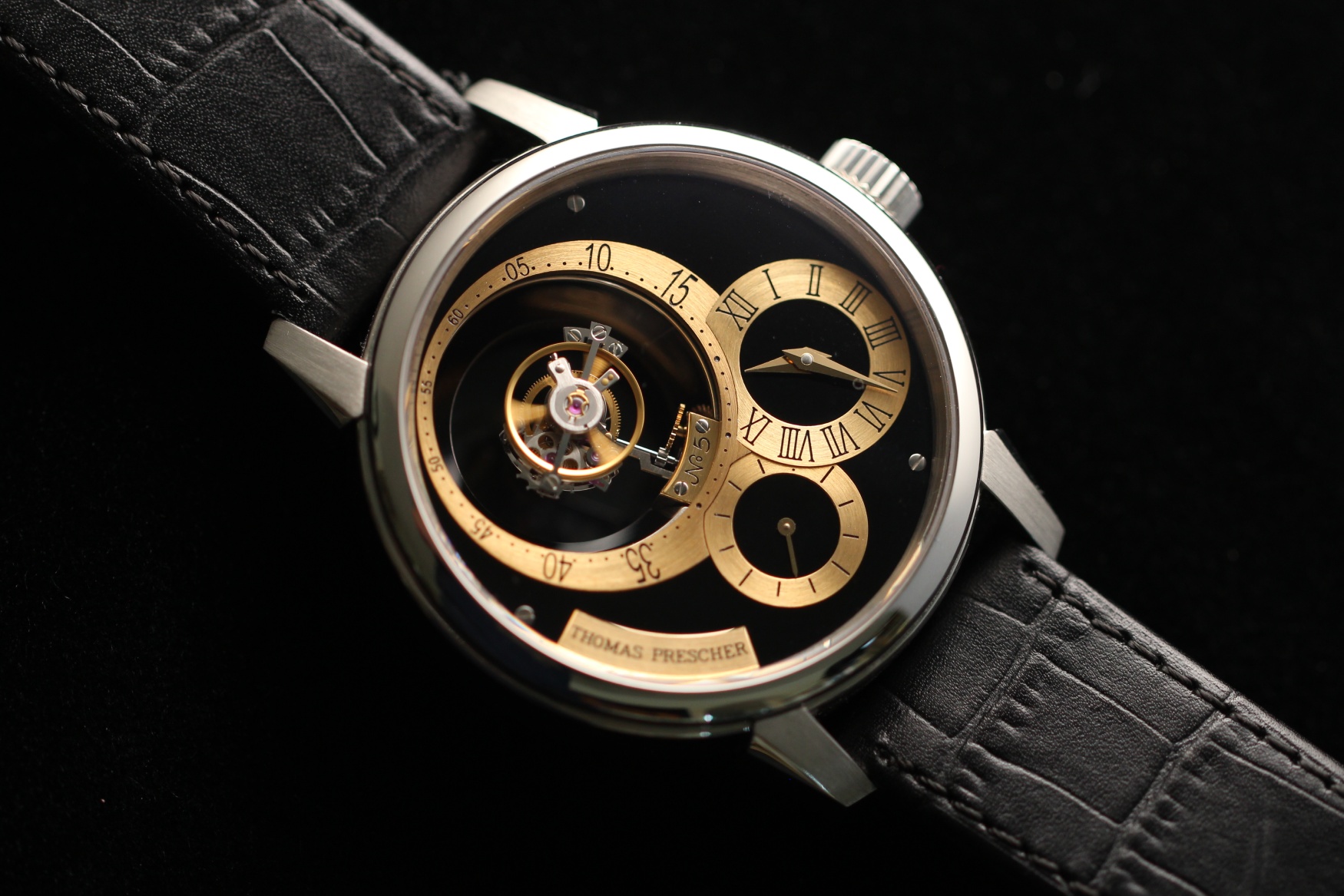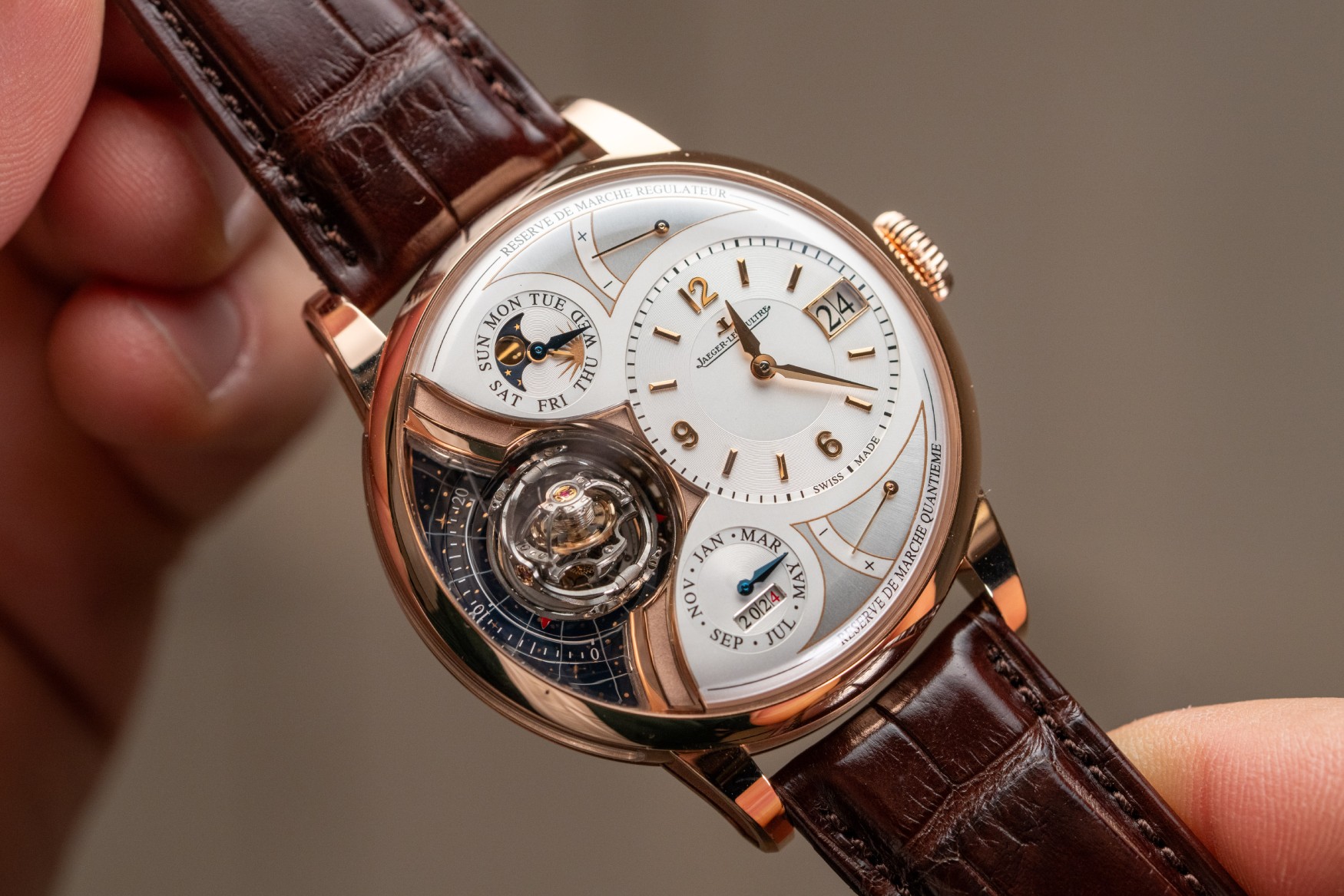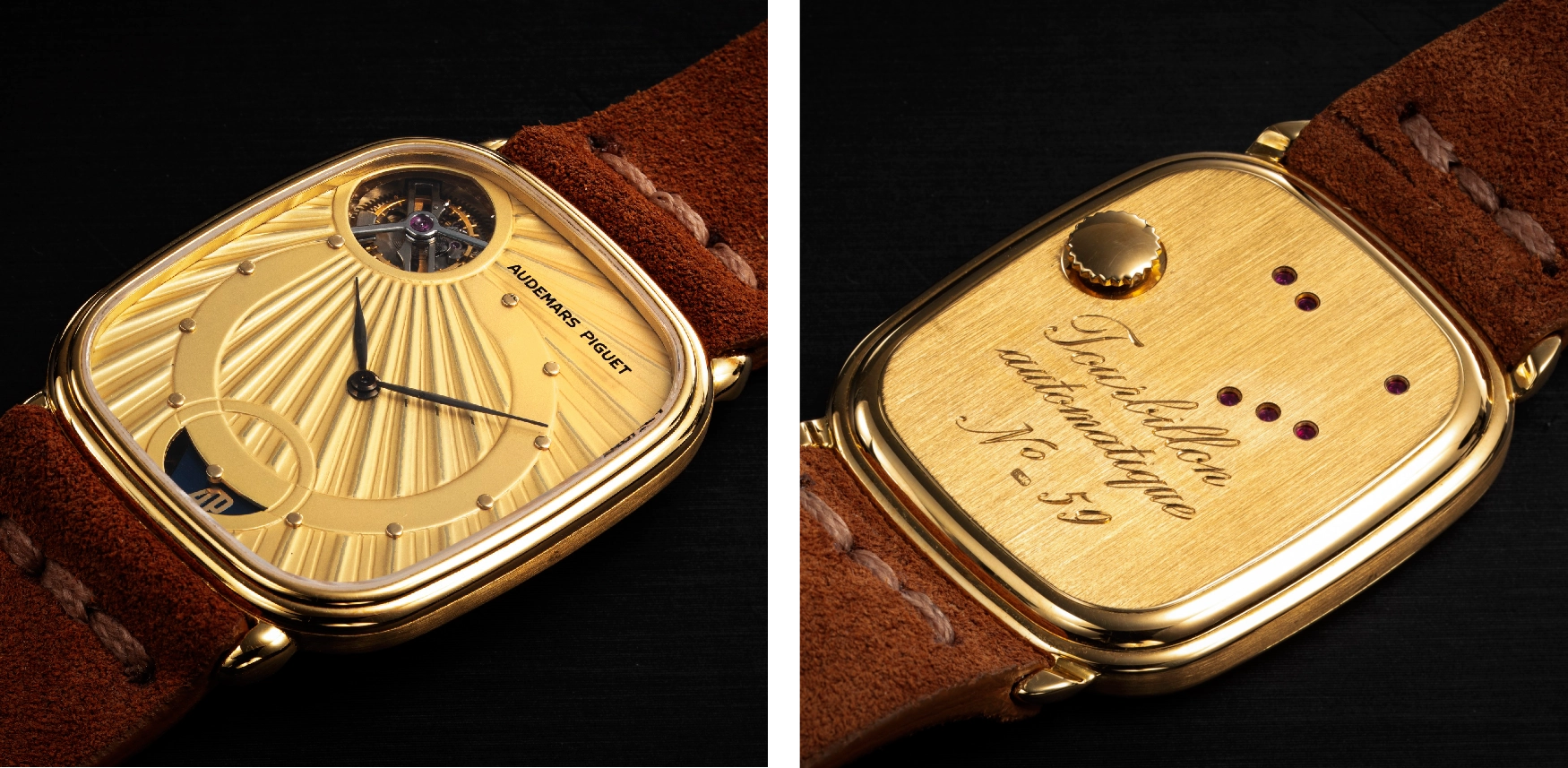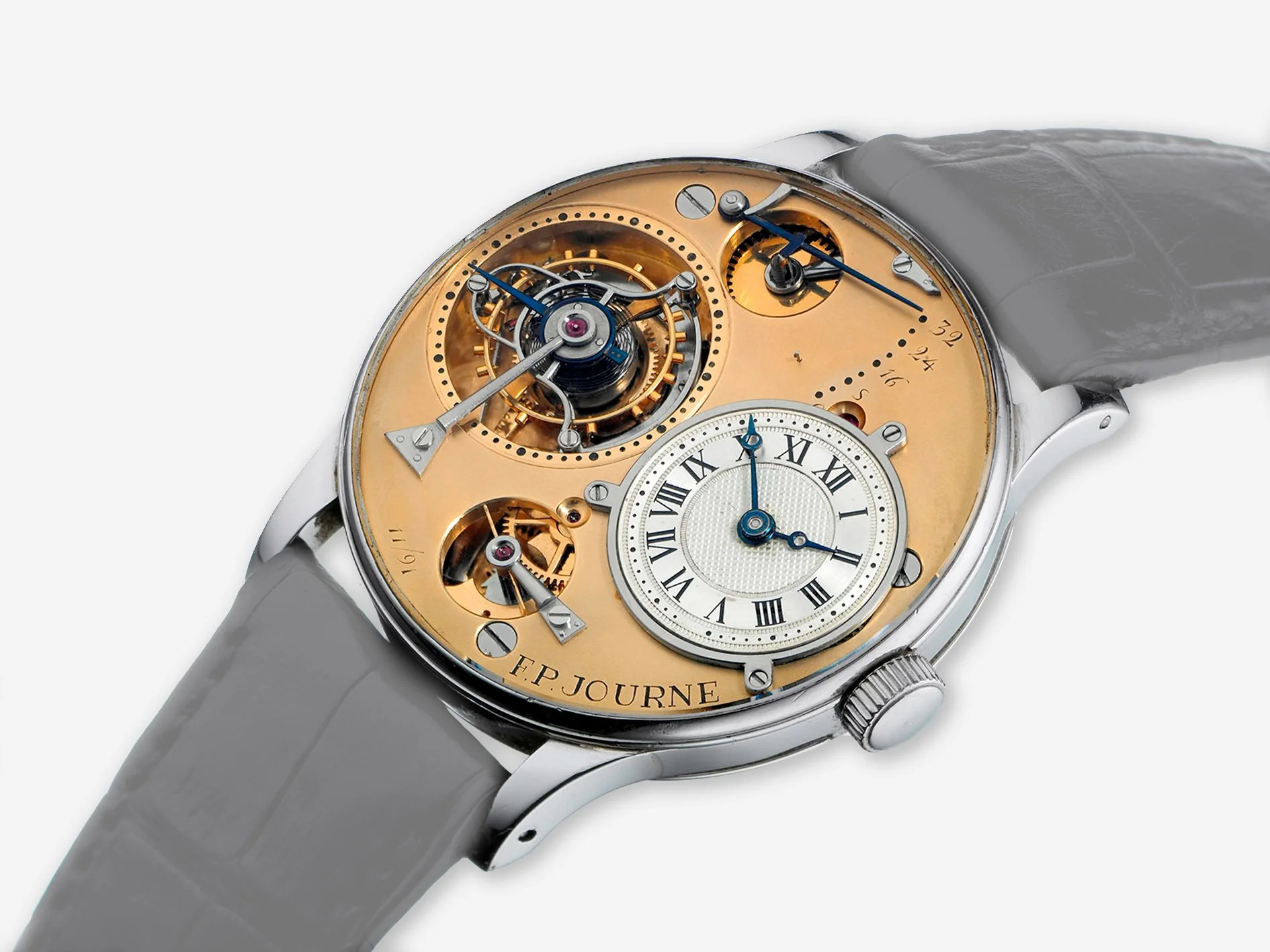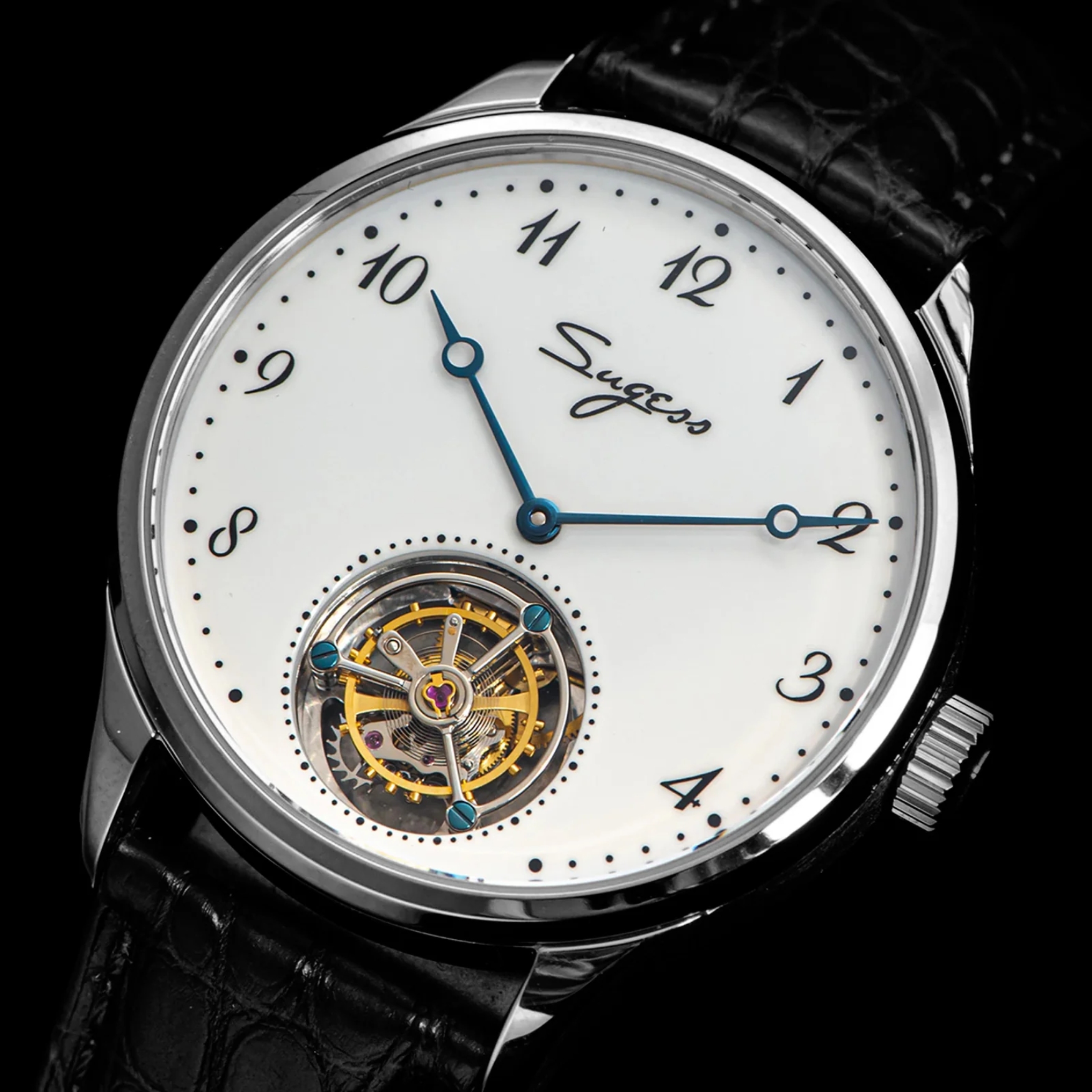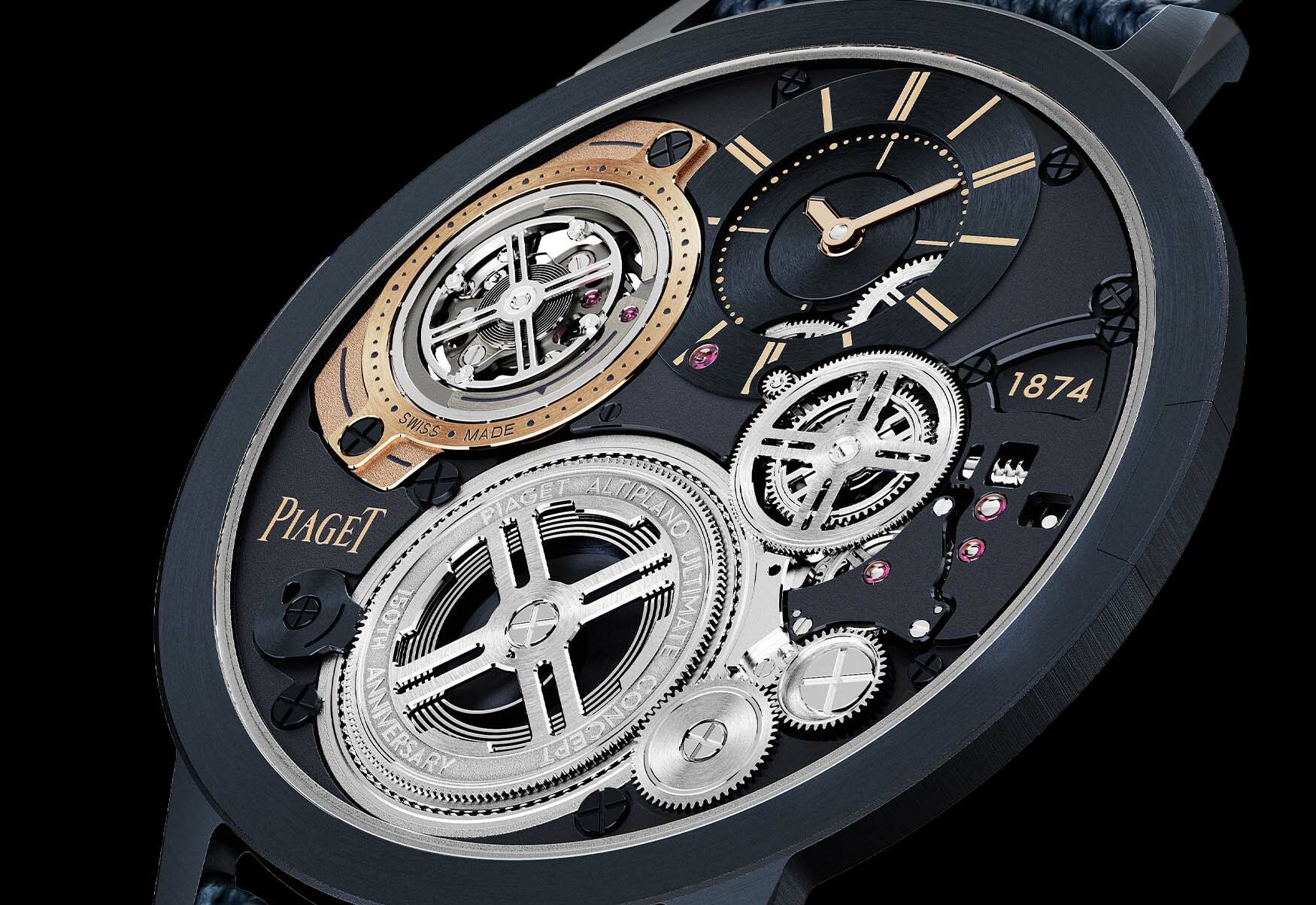History of the tourbillon, and the relevance of the complication today
Borna BošnjakDespite all the advances we’ve made since the inception of timekeeping devices, one could argue three watchmaking complications are most revered – the perpetual calendar, the minute repeater, and the tourbillon. While the first two are very much complications in the truest sense of the word, allowing watches to display more than just the time, you could say that a tourbillon is a complication in a much purer form, concerning itself with a basic tenet of a time-telling tchotchke – accuracy. Or at least, that’s what Breguet had in mind when he had his “Eureka!” moment in the late 1800s, roughly translating to “whirlwind” or “whirlpool” from French (or “whirling about regulator”, if you ask Breguet). Thanks to advances in technology and tightening manufacturing tolerances, however, manufacturing of tourbillons isn’t reserved for only the steadiest hands of long-suffering artisans – but does that change the inherent romanticism surrounding the complication? Before answering that, we have to go back to the very beginning of the history of tourbillons.
The pursuit of ultimate precision and manufacturing competence
Unlike many inventions, horological ones included, the idea of the tourbillon can be safely attributed to Abraham-Louis Breguet. In a 1795 letter to his son, Breguet senior describes the invention he will eventually patent five years later in December 1800. The new escapement technology would take all of those years, and more, to perfect – in fact, the tourbillon was publicly presented only in 1806. In the decade between the initial idea and public unveiling, Breguet is believed to have created two prototype tourbillons – number 169 and 282. Interestingly, the former was gifted to John Arnold’s son, Arnold himself a renowned chronometer maker at the time, with rumours existing that Breguet modified his pocket watches with the very first tourbillon escapements.
The basic idea was to constantly change the position of the balance, resulting in the effects of gravity on the balance spring lessening. For pocket watches and clocks which were the main timekeeping devices at the time, they would usually be kept upright in a single position, so Breguet thought to house the entire escapement – including the balance wheel, balance spring, escape wheel, and pallet fork – in a rotating cage. The cage’s rotation would eventually even out the gravitational effects on the balance spring, thus improving chronometric performance. To rotate the carriage, a planetary gear on the escape wheel interacts with the fixed wheel (roughly equivalent to the seconds gear in a regular escapement), turning the entire tourbillon cage.
If all of that sounds really complicated, it’s because it is. As mentioned before, Breguet took more than a decade to reliably craft his idea in brass, going on to make just 35 tourbillons total during his lifetime. During this time, the idea of the lever escapement itself was quite novel, meaning that the 35 tourbillons he made consisted of lever, natural, and cross detent escapements.
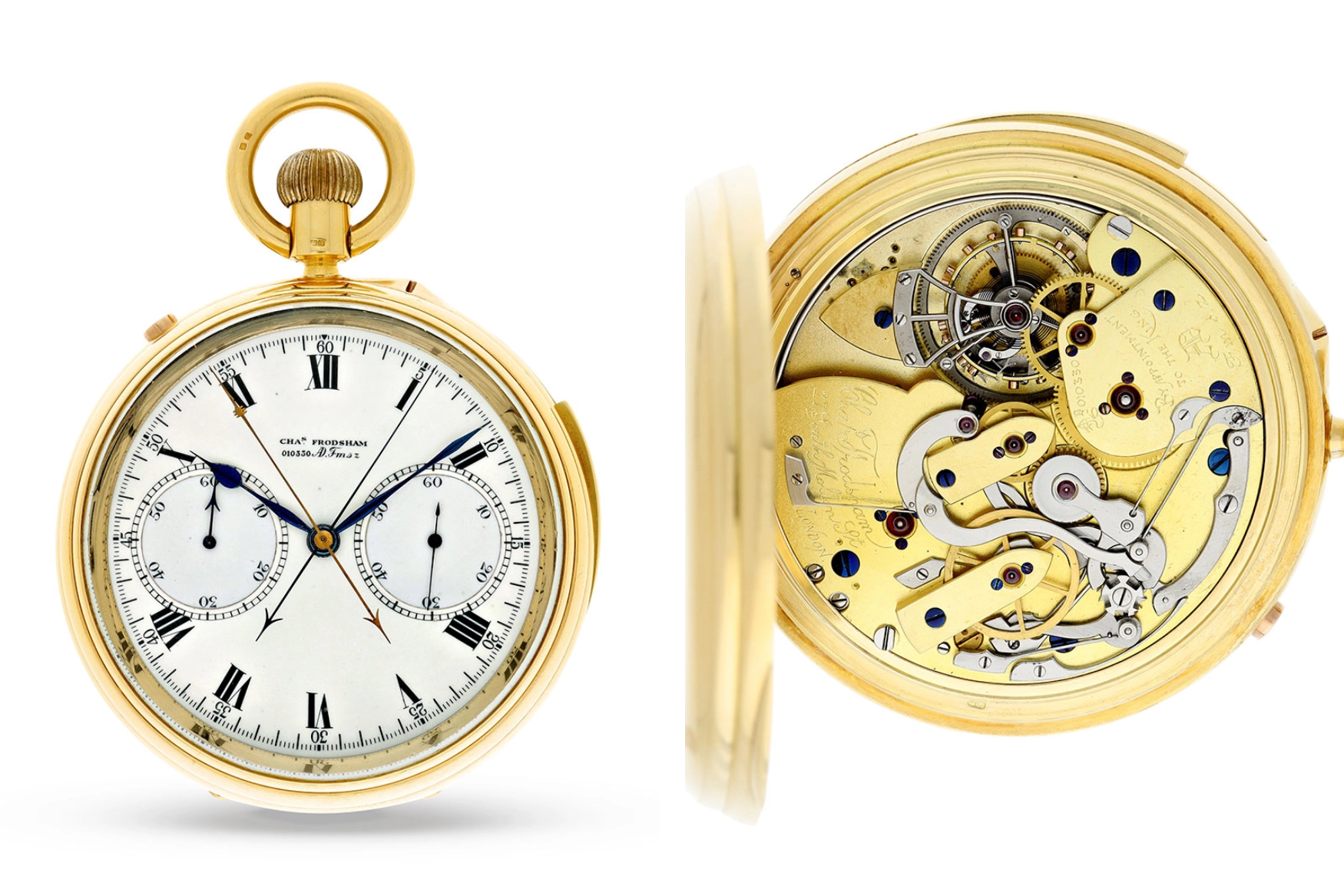
Seeing as Breguet’s patent only lasted 10 years, the 19th century saw other watchmakers attempt their own tourbillons. Frodsham, Smith & Sons, and Dent all sold them, with many of the actual movements being produced by Nicole Nielsen, going on to be submitted to Kew Observatory chronometry trials. This relatively unknown but nonetheless prolific complications manufacturer of the 19th century existed since the late 1830s, manufacturing split-seconds chronographs, grand complications, chronometers, and tourbillons.
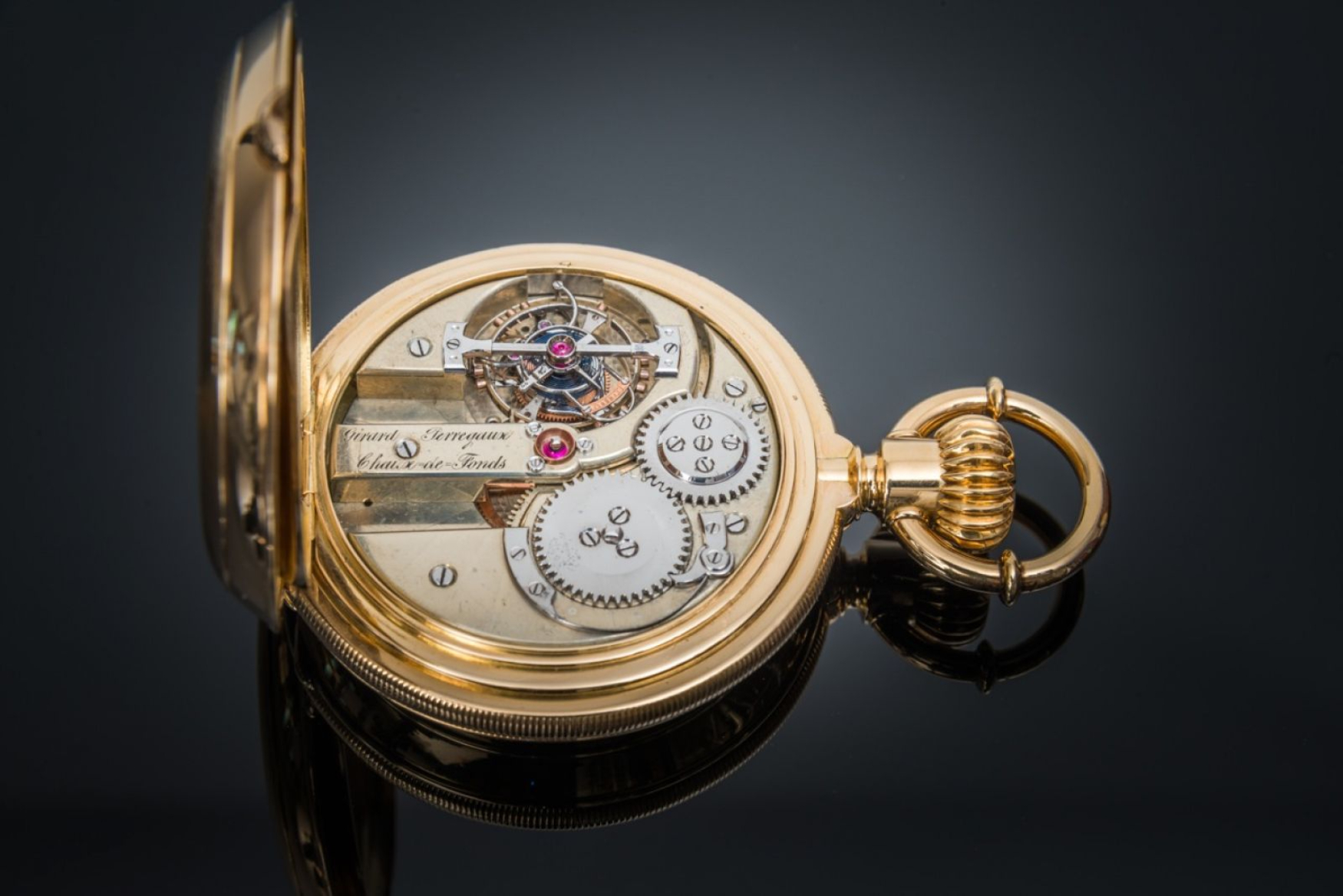
Alongside Breguet, the most notable tourbillon maker of the 19th century was likely Ernest Guinand. While his work in developing Girard-Perregaux tourbillons is perhaps most well-documented, he also made numerous unsigned pocket watches equipped with his signature tourbillon cage, as well as allegedly making Patek Philippe’s first-ever tourbillon in 1864. The patent for the Girard-Perregaux Three Gold Bridges was finalised in 1884 – a design the brand still uses today – but most incredibly, his very first tourbillon was noted for performing extremely well at Neuchâtel Observatory trials. The Guinand tourbillon number 1060 from 1867 showed a maximum gain of 0.15 seconds per day, with no deviation whatsoever over a varied temperature range.
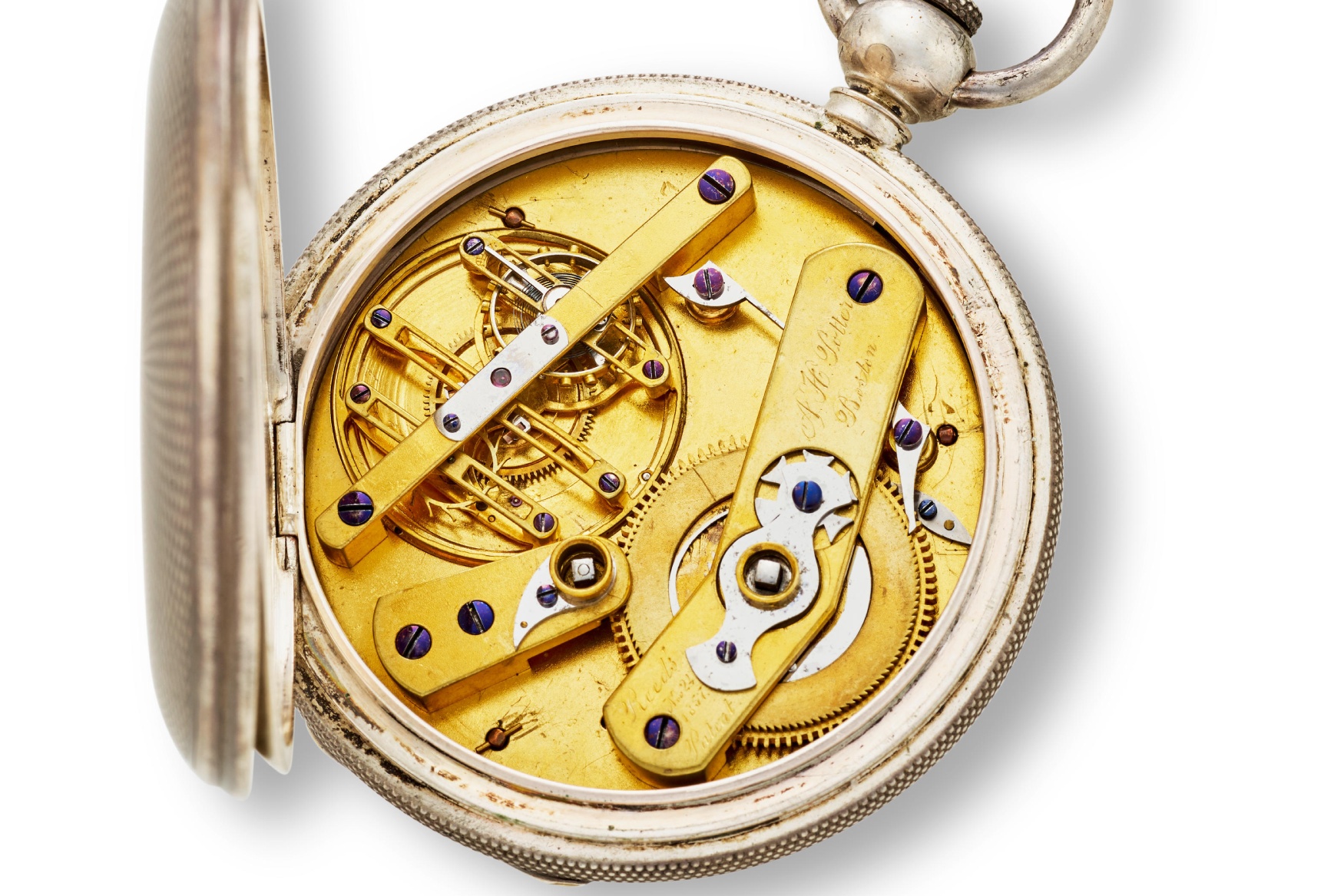
Just because tourbillons were difficult to make at this time, that does not mean the best watchmakers around didn’t look to improve on the technology. The A. H. Potter above is believed to be the first-ever tourbillon with an inclined balance, something that Greubel Forsey popularised in the 21st century. While this nine-jewel, key-wound watch from 1860 is far a far cry from the technical and finishing marvel that a GF is, it’s worth noting that it was completely made by hand, with acronyms such as CNC or CAD taking another century to really mean anything significant.
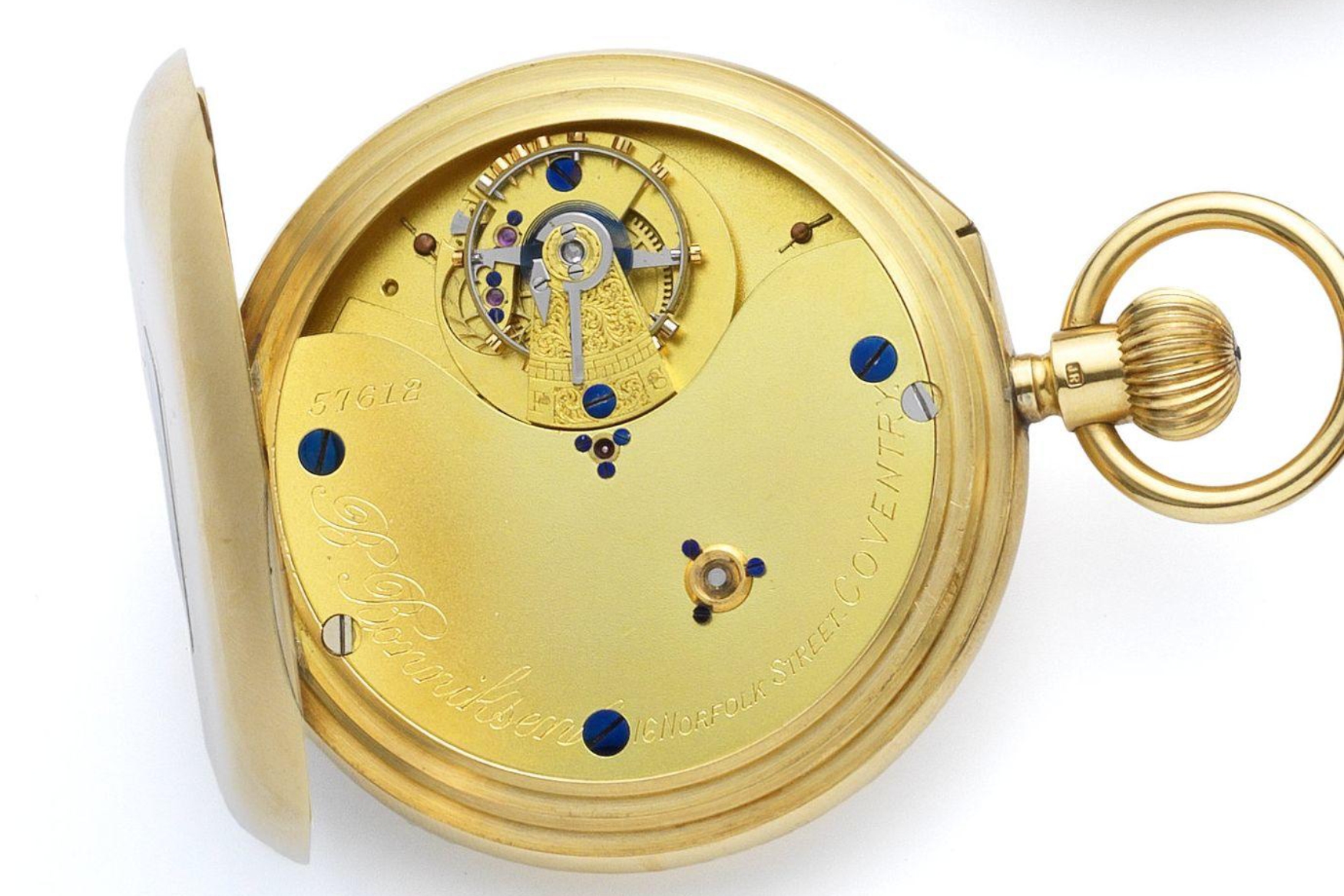
Showing just how slow this progress was, however, is the 1892 invention of the karrusel by German horologist Bahne Bonniksen. Intended as a less complex alternative to Breguet’s tourbillon, the karrusel still involves a rotating balance, though this rotation would happen much more slowly. Whereas tourbillons would complete their rotations in minutes or less, the Bonniksen karrusel was designed to take 52.5 minutes, the construction adopted by some English watchmakers including the aforementioned Frodsham and Nicole Nielsen. Rather than revolving about a fixed fourth gear, the karrusel wheel seen above houses what looks like a regular escapement with a cock-suspended balance, but actually rotates in its entirety around the axis of the rotating fourth wheel which interacts with the escape and third wheels. The result is the fourth wheel and karrusel wheel rotating independently and at different speeds. These days, Blancpain is the only big-box manufacturer that uses the karrusel principle. Iterating on Bonniksen’s original design with a flying variant, Blancpain also combined a tourbillon and karrusel in one watch.
We’ve figured out the tourbillon, now let’s complicate it further
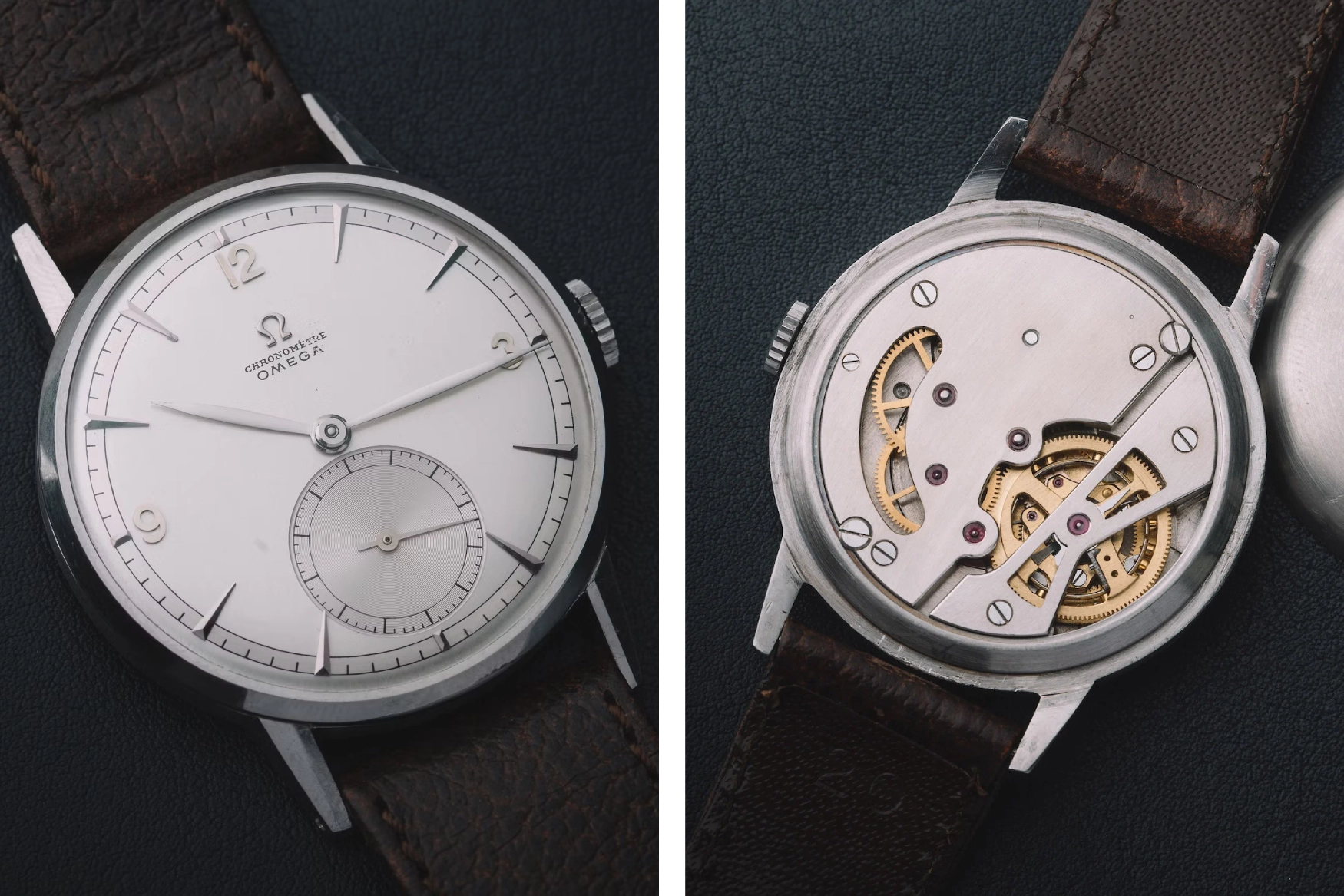
In the years between the tourbillon’s invention and the end of WWII, it’s estimated that no more than 1,000 tourbillons were made, with some believing it to be as few as 600, equating to five to seven per year. It was about time for the tourbillon to make its way into wristwatches, and the earliest instance of this is attributed to Patek Philippe and André Bornand who developed the movement. It was developed specially for the Geneva Observatory trials, though it would take another 40 years to find a case, becoming the personal watch of Philippe Stern in 1987 as the reference 3699. Bornand would make a limited run of tourbillon Patek Philippe movements in the 1950s, again for the purpose of chronometry trials, outfitting them with Guillaume compensating balances and Breguet balance springs, taking two first places.
Two unlikely heroes of this story, however, are Lip and Omega. The former is said to have created a tourbillon wristwatch as early as 1930, though I was not able to find any evidence supporting this claim. More famously, Omega created the calibre 30 I, again for the purpose of chronometry trials, and not casing the watches until the 1980s. However, the brand apparently discovered a cased prototype watch from 1947, fetching nearly CHF 1.5 million in auction in 2017, making it the most expensive Omega sold at auction at the time.
Other than making tourbillons more compact, watchmakers such as Robert Benson North and Alfred Helwig looked to push its development further. While Helwig is commonly known as the inventor of the flying tourbillon, where the upper bridge of the tourbillon cage is removed, Benson North’s 1904 patent contests this. His idea was to mount the tourbillon on a rotating platform, making it easier and cheaper to produce such an escapement, though still anchoring it with a fixed fourth wheel, making it a tourbillon rather than a karrusel.
Helwig’s 1920 invention is much more akin to the flying tourbillons we see today, only differentiated by the lack of an upper cock or bridge.
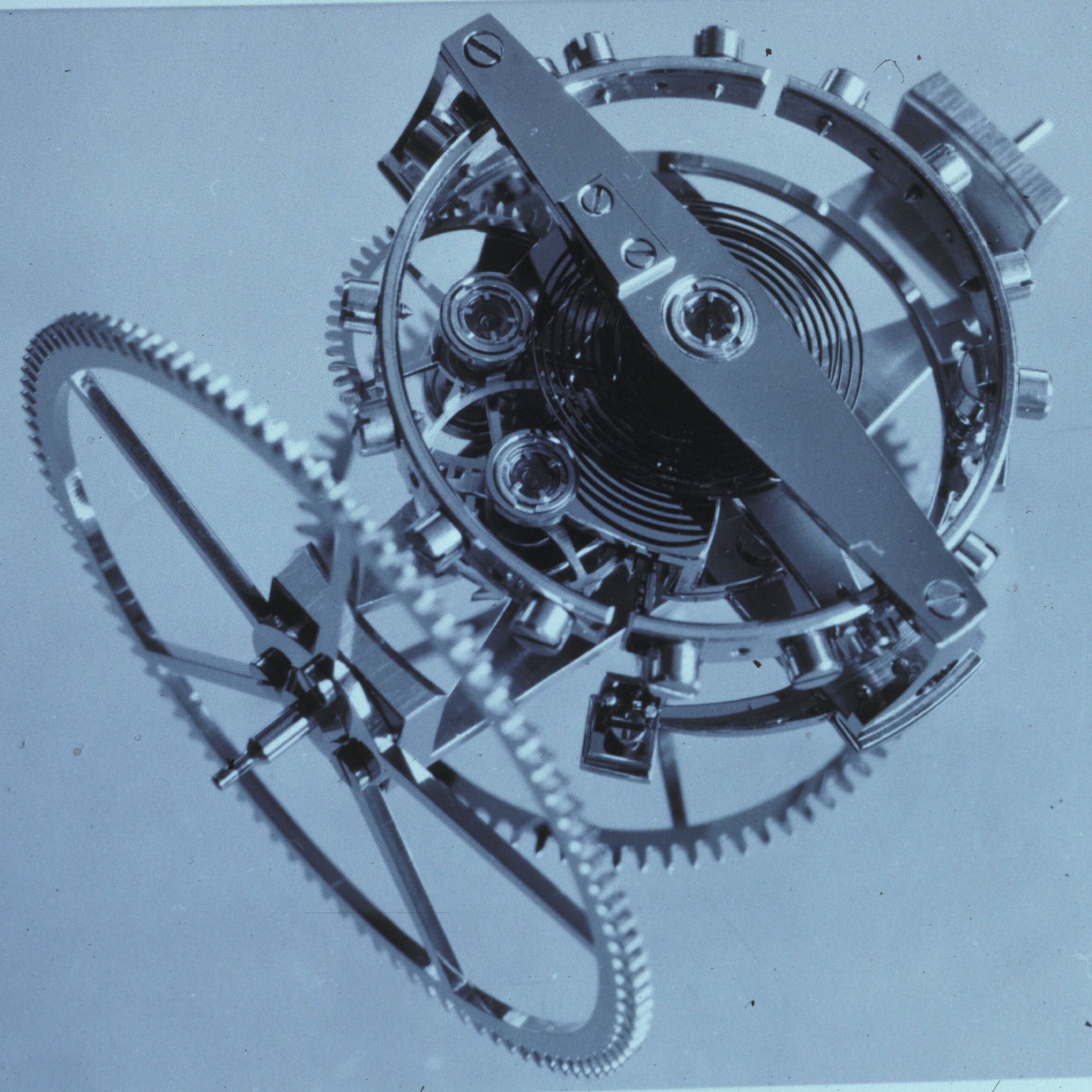
While Benson North and Helwig worked on simplifying the tourbillon, people like Anthony Randall looked to make it even more complicated. The patent was finalised in 1977, the first prototype completed a year later by Richard Good, before fitting a carriage clock with the mechanism in 1980.
Arguing that it doesn’t make much sense in a statically oriented clock, a young Thomas Prescher looked to integrated a double-axis tourbillon into a wristwatch, doing so in 2003. Not only was it the first dual-axis tourbillon wristwatch, Prescher also developed it as a flying, remontoir-regulated mechanism to be displayed in the bubble-like aperture of the watch.
Just a year later, Prescher outdid himself by adding a third axis to his tourbillon mechanism, openly admitting he was more concerned with the artistic pursuit of miniaturising a triple-axis tourbillon into a wristwatch, rather than its out-and-out rate improvement.
There’s a multitude of independent watchmakers notable for their work with multi-tourbillon and multi-axis tourbillon movements – Bexei and Greubel Forsey a particularly notable two – but perhaps the best-known are Jaeger-LeCoultre’s Spherotourbillon, Gyrotourbillon, and Heliotourbillon. The first two are two variants of JLC’s double-axis tourbillons, with only the Spherotourbillon (and second-generation Gyrotourbillon) being equipped with spherical balance springs. The Heliotourbillon in the new Duomètre released this year adds a third axis, while the balance features a cylindrical hairspring.
Perhaps the most important practical development of a tourbillon came in 1986 and Audemars Piguet’s Tourbillon Automatique reference 25643. The entire calibre 2870 sat at just 2.5mm, incredibly thin by any stretch of the imagination, and especially so considering the complexity of a tourbillon movement. It had no traditional crown, and the caseback actually served as the top plate evidenced by the jewels peeking through. While it was not so well-known for incredible accuracy, it was a sign that tourbillons may become more approachable, as more and more mainstream brands were jumping on the tourbillon trend.
Chronometric necessity or horological peacocking?
In the years to come, tourbillons would become increasingly more common, leading us to today, when we basically see a new tourbillon released weekly. But the very idea of a tourbillon was conceived for a pocket watch, meant to negate its singular orientation in one’s pocket, so does a tourbillon make sense in a wristwatch in the first place? Furthermore, even in Breguet’s time, watches inherently were inaccurate due to imperfect manufacturing techniques. So, as good as Breguet’s tourbillons were, did they make sense even back then?
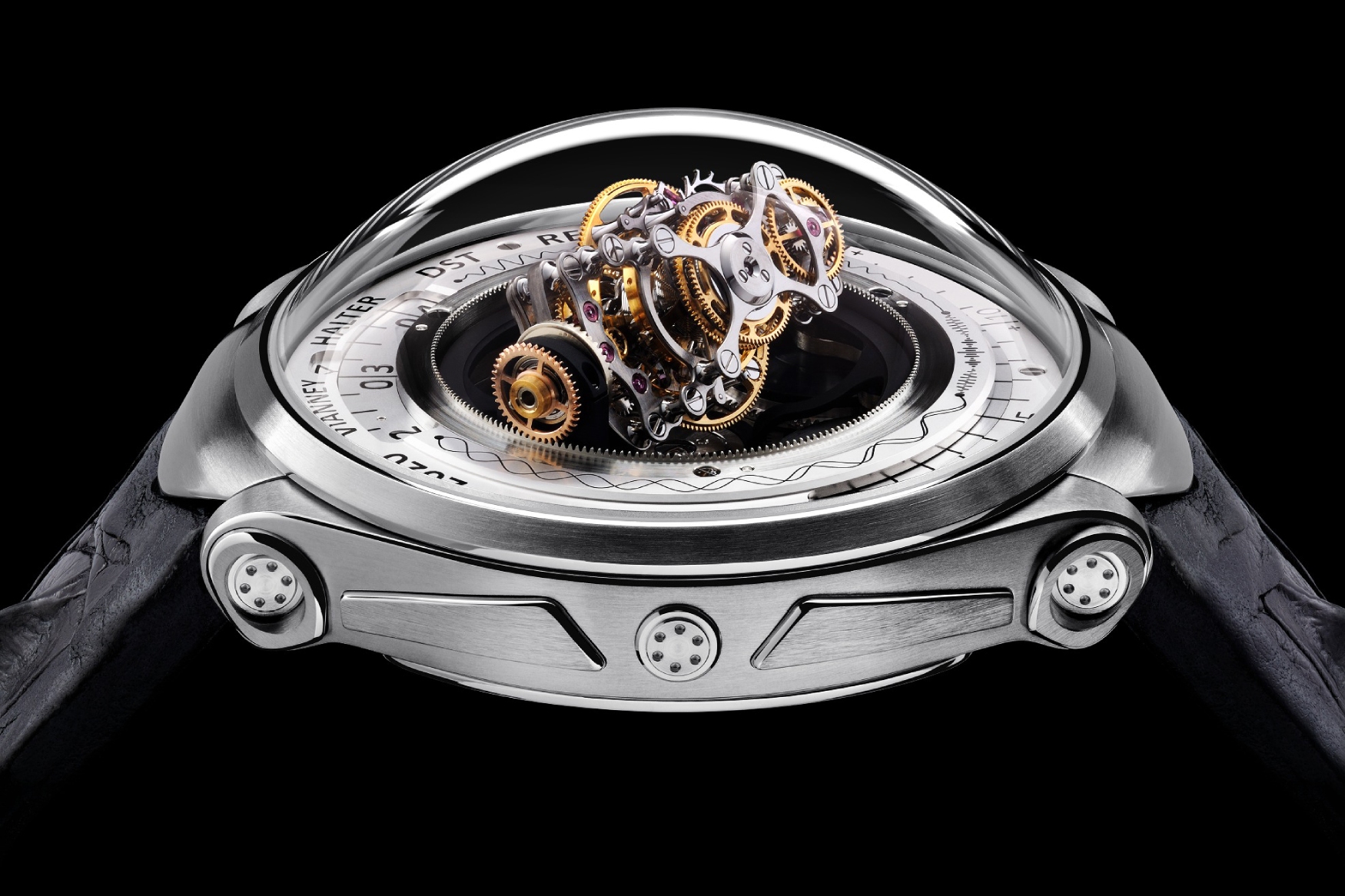
I think the answer to that second question is a resounding “yes”. It’s true that post-Industrial Revolution precision manufacturing was kind of like the early days of 3D printing – only applicable in a select few scenarios, and quite pricey. And that’s exactly what a wristwatch like a Breguet tourbillon was – meticulously pored over by one of the greatest watchmakers of all time, sold to the 1% of the 1%.
As for tourbillons in wristwatches, that’s more difficult to answer. Timekeeping-wise, even the best tourbillon will be beaten by a quartz watch, and other types of complications are potentially more complex to design now that manufacturing tolerances are generally really good. Does that make a tourbillon-equipped watch any less attractive? I think you’ll find most watch nerds shaking their heads at the idea, myself included.
If anything, perhaps tourbillons paint a picture of how advances in technology have made incredible things more easily achievable for the masses. While the prestige and degree of finishing will not be on par with even the most affordable tourbillon from a renowned manufacturer, you can find tourbillons for as little as a few hundred dollars from Chinese powerhouse Seagull. If you look really hard, you’ll even find modern adaptations of Bonniksen’s karrusel, if you don’t fancy spending a cool $150,000 on a Blancpain.
We’ve already had watchmakers stuff four tourbillons on a single watch, as well as numerous multi-axis tourbillons. Grand Seiko combined a constant-force mechanism with a tourbillon in a single cage, and Vianney Halter explored a natural phenomenon for his Deep Space Tourbillon Resonance in a unique way. So, what’s next? Perhaps a brand that will go thinner than Piaget’s 2mm-thick Altiplano Ultimate Concept Tourbillon, or will someone add more axes, or perhaps make a tourbillon even more affordable? Whatever the next big thing in tourbillons will be, I’m sure it’s not too far away.




